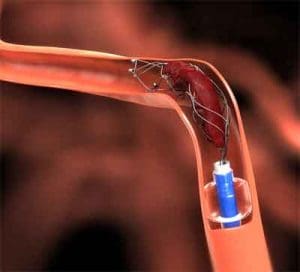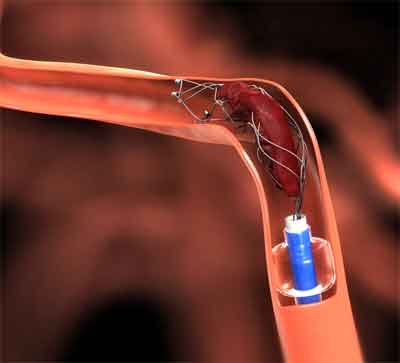Quiz Time: Your Patient who had a stroke is being considered for clot retrieval. Which statement about this procedure is correct?
Clot retrieval is surgical treatment for acute stroke that involves the mechanical removal of a blood clot from a patient’s brain. It is offered as a treatment for patients who have experienced a stroke as the result of narrowing of the arteries in their brain.
a. It is performed under local anesthesia.
b. It must be completed within 6 hours of stroke onset.
c. It can reduce the risk of permanent disability.
d. It must begin within 4 hours of stroke onset.
Answer: (c.) Clot retrieval, an end-vascular treatment, is done by a neurointerventionalist and can greatly reduce the risk of permanent disability. Stent clot retrievers are fine wire mesh tubes that trap the blood clot and follow it to be pulled from the brain.


Learn more by reading the continuing nursing education article “Urgent care for stroke patients: Timing is everything”
While relaxing at home at about 4 PM, Alan Sarangelo, a retired 62-year-old respiratory therapist, feels the left side of his face growing numb. His wife, a nurse, suspects he may be having a stroke and immediately calls 911.
At 4:25 PM, Mr. Sarangelo is emergently transported to the emergency department (ED) of a Joint Commission-accredited primary stroke center. There, clinicians note his slurred speech, left-sided facial drooping, and difficulty holding his left arm up for more than a few seconds. His vital signs are blood pressure (BP) 189/112 mm Hg; pulse, 112 beats/minute; respiratory rate (RR), 23 breaths/minute; and oxygen saturation 96% on room air. Mr. Sarangelo’s wife tells them he has a history of type 2 diabetes, hypertension, and hyperlipidemia.
For stroke patients who meet certain criteria, thrombolytic therapy to break down blood clots is the primary treatment option. Tissue plasminogen activator (tPA), the most frequently used thrombolytic, is a protein that catalyzes the conversion of plasminogen to plasmin, the major enzyme that breaks down clots. To be eligible for tPA, the patient must reach a certified stroke center as soon as possible after symptom onset. By some estimates, only 3% to 5% of stroke patients get to thehospital in time to receive tPA.


















